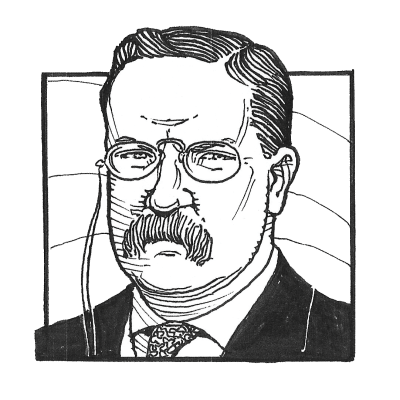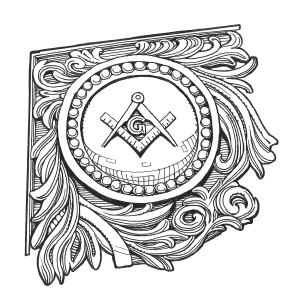“THIS IS STILL OPERATING, yes, ma’am,” says Greg Baker, secretary for Chapman Masonic Lodge No. 2. We’re standing outside the ruddy, purplish sandstone front of what experts call the most architecturally significant building in Las Vegas, located at 518 ½ Douglas Avenue.
When I happen by New Mexico’s third-oldest Freemason lodge on a summer afternoon, Baker is unlocking a front door. I quickly cadge an impromptu tour from the former park ranger. He’s extra-obliged to show off the wonders of the three-story building and its bell tower, which was designed by brothers Isaac H. and William M. Rapp. (Although Isaac has been credited with introducing Santa Fe Style to New Mexico, the Las Vegas temple is the West’s best example of a Richardsonian Romanesque design.) We mount a hand-carved wooden staircase to the lodge rooms, which feature an intimidating array of framed black-and-white Masons on the walls, many of whose names I recognize as city luminaries.
Dedicated in 1895 and costing around $50,000, the Rapp & Rapp building has been home to many ground-floor retail and nonprofit operations, though the storefronts are currently vacant. Upon their completion, the upper floors quickly became a sanctuary for the kind of secret rituals and gentleman’s bargains that transpired among the boomtown’s elite. The Montezuma Club, an organization for the sons of rich local merchants, moved into the second floor in 1895. Another chamber holds a surprise—a gleaming midcentury courtroom that has appeared in films including The Hi-Lo Country.

MEET TEDDY ROOSEVELT
The president didn’t just visit his fellow Masons in Las Vegas. He began making trips to the city in 1899, when he rode a horse in the first Rough Riders reunion parade to celebrate the 1st United States Volunteer Cavalry, which fought in the Spanish–American War. Teddy and the Rough Riders have been associated with Las Vegas ever since.
Illustration by Rick Geary.
The tin-ceilinged rooms overlooking Douglas Avenue still contain the trappings of recreational fraternal activities—a pool table in one corner, a framed photo of white-wigged, stockinged men in Founding Fathers cosplay in another.
“Our brother Teddy Roosevelt came through for the Rough Rider reunion,” Baker says, indicating a photograph of the 26th president of the United States. “With best wishes and fraternal compliments of the White House,” reads the inscription under another image, this one of a mustachioed William Howard Taft, who succeeded Roosevelt.
“It’s a typical Masonic temple,” Baker says, “but we have such a great history.” He holds up a Bible presented to the lodge in 1867, adding that the temple’s altar was ferried over the Santa Fe Trail. “Most of these allegorical symbols in and on the building wouldn’t have been known to just Masons,” he says. “They were pretty well understood, regardless of where you came from.” The carvings flanking the lodge’s main tower entrance, which include the traditional symbolic compass, were made freehand by Ed Morris, who derived their intricate style from acclaimed Chicago architect Louis Sullivan.
We take a ride in what may be the state’s oldest elevator—since an inspection notice from 2021 hangs on the door, I figure it’s a good bet we won’t get stuck there. I know I’ll be back to examine the temple’s contents more carefully: The building is often open to visitors via the city’s annual Places With a Past tour. But Baker notes that what the onetime most expensive structure in New Town really needs is a renovation that addresses the damaged roof.
“We’re always fundraising,” he says. “This place isn’t going anywhere.”

SQUARE AND COMPASSES
The most recognizable emblem of Freemasonry represents an architect’s tools. It is used in rituals to impart symbolic lessons. Some interpret the G as standing for God; others interpret it to mean geometry.
Illustration by Rick Geary.



